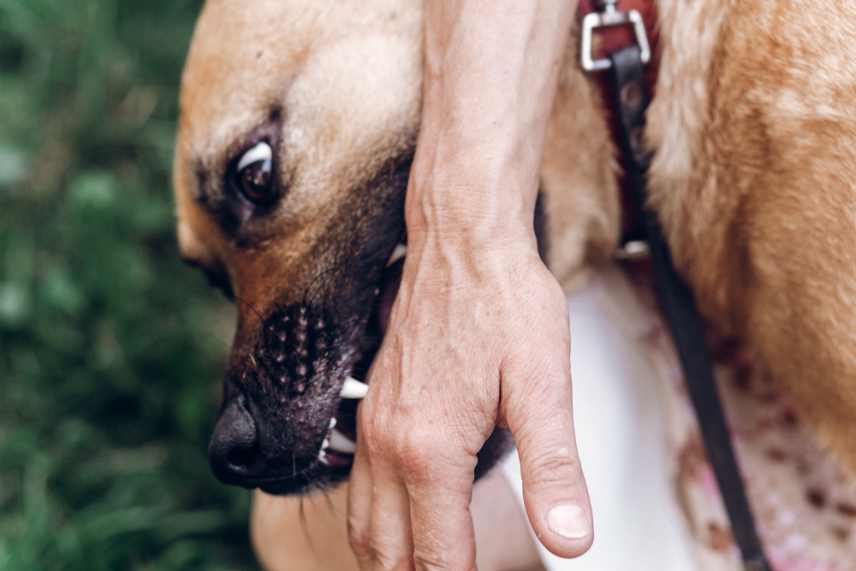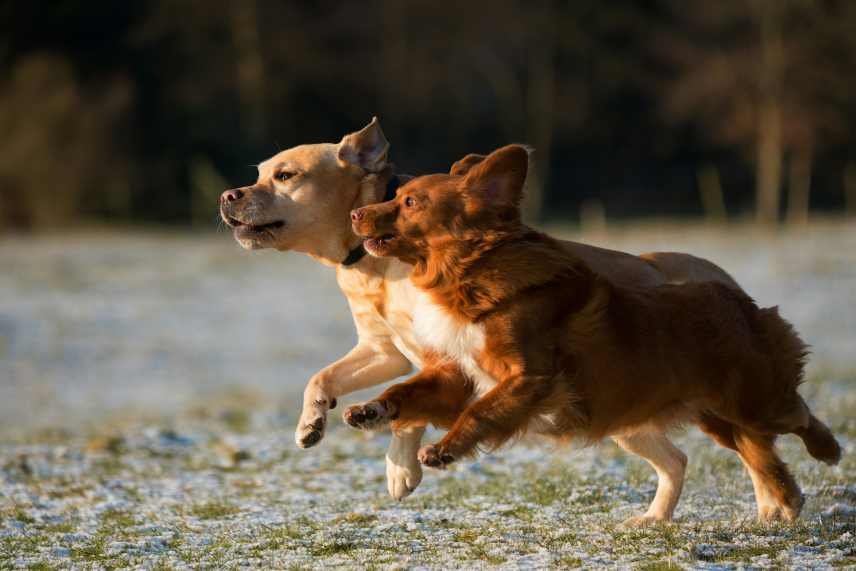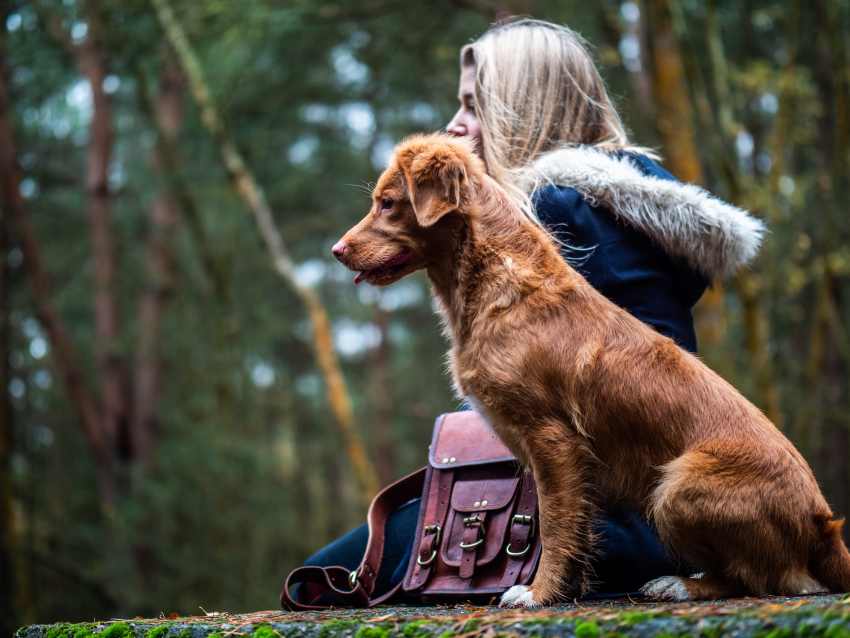Dogs are known for their loyalty and affection, but sometimes they may exhibit aggressive behavior. Understanding how to stop a dog from biting hands is crucial to prevent injuries to both the owner and the dog. Recognizing this behavior can help owners address and manage it effectively.
Puppies may bite as a form of play or exploration. However, it is important to train them early on to understand that biting is not acceptable behavior. Adult dogs may bite due to fear, anxiety, or a lack of socialization. Understanding the cause of the behavior is important in finding a solution.
Dog owners can take several steps to stop their dog from biting hands. These include providing plenty of exercise and mental stimulation, socializing the dog with other dogs and people, and using positive reinforcement training methods. It is important to remember that stopping a dog from biting requires patience and consistency.

Puppy Training: 5 Problematic Behaviors and Habits to Correct Early
Understanding Dog Biting Behavior
The Psychology Behind Biting
Dogs can bite for a variety of reasons, and it is important to understand the psychology behind this behavior. Biting can be a form of communication, self-defense, or play. Puppies, for example, may bite as a way to explore and learn about their environment. However, biting can also be a sign of fear, stress, or aggression.
Impulse control is another factor that can contribute to biting behavior. Dogs that lack impulse control may be more likely to bite when they become excited or overstimulated. This is especially true for breeds that were originally bred for hunting or guarding, as they may have a higher prey drive or protective instincts.
Common Causes of Biting
There are many potential causes of biting behavior in dogs. Fear and stress are common triggers, as dogs may bite as a way to protect themselves or their territory. Pain or discomfort can also lead to biting, especially if a dog is experiencing dental issues or other health problems.
Teething is another common cause of biting in puppies. As their teeth come in, they may chew on anything they can get their mouths on, including hands and fingers. This type of biting is usually playful and not aggressive, but it can still be painful or annoying for humans.
Recognizing Aggressive vs. Playful Biting
It is important to be able to recognize the difference between aggressive biting and playful biting. Aggressive biting is usually accompanied by other signs of aggressive behavior, such as growling, snarling, or stiff body language. Playful biting, on the other hand, is usually accompanied by wagging tails, relaxed body language, and soft, playful barks.
Body language and posture are important cues to look for when trying to determine a dog’s intentions. A dog that is standing tall with a stiff posture and a tense expression may be feeling threatened or aggressive. A dog that is relaxed and playful, on the other hand, may have a loose, wiggly body and a happy expression.
Play mouthing and resource guarding are two other behaviors that can be mistaken for biting. Play mouthing is a common behavior in puppies, where they use their mouths to play and explore. Resource guarding, on the other hand, is when a dog becomes aggressive when someone tries to take away their food, toys, or other possessions.
By understanding the psychology behind biting behavior and recognizing the different types of biting, dog owners can take steps to prevent and address this behavior.
Preventive Measures and Early Training
The Importance of Socialization
Socialization is a crucial aspect of a puppy’s early training. It involves exposing the puppy to various people, animals, and environments to help them develop a positive attitude towards them. Proper socialization helps prevent fear, anxiety, and aggression in dogs. It is best to start socializing puppies as early as possible, ideally between 3 to 14 weeks of age. Puppy classes are a great way to socialize puppies with other dogs and people.
Bite Inhibition Training
Bite inhibition training teaches puppies to control the pressure of their bites. It is essential to teach puppies that biting is not an acceptable behavior, and they should avoid it. Puppies should learn to inhibit their bites during playtime with their littermates. If a puppy bites too hard, the other puppy will yelp and stop playing, teaching the biting puppy that biting too hard is not acceptable. This training should continue when the puppy goes home with their new owner.
Consistency in Training
Consistency in training is crucial to ensure that the puppy learns the desired behavior. Puppies should be trained using positive reinforcement techniques, such as treats and praise, to encourage good behavior. The owner should avoid using punishment or physical force, as it can lead to fear and aggression in dogs. It is essential to establish clear rules and boundaries for the puppy and to reinforce them consistently.
In conclusion, preventive measures and early training are crucial to stop a dog from biting hands. Socialization, bite inhibition training, and consistency in training are some of the essential techniques that can help prevent biting and mouthing in puppies. Positive reinforcement techniques should be used to encourage good behavior, and punishment or physical force should be avoided. By following these techniques, owners can help their puppies develop good habits and prevent biting and other behavioral problems in the future.
- Stuffing Free Squeaky Dog Toys – These lovable characters will give your dogs hours of fun without the fuss of cleaning up the mess of shredded stuffing. Get playing with 3 adorable woodland creatures – fox, raccoon, and squirrel.
- Flat Toys for Small & Medium Dogs – Each unstuffed dog toy has 3 independent zones each with a high-quality round squeaker to deliver more sound to keep your best friend entertained.
- Soft Puppy Toys – Skinny Peltz dog toys contain no stuffing to ensure they last longer for a mess free fun both for you and your pup. Machine washable on gentle cycle with mild detergent. Tumble dry low for maximum fluffiness.
- Popular Puppy Toys – This unique plush toy set contains 3 Skinny Peltz pet toys. Each is 18 inches long, the perfect size for small and medium dog breeds of all life stages.
- Unique Novelty Dog Toys – These beautifully-designed stuffingless squeak toys are lovingly made with high-quality materials to be the choice pet products for the modern dog and dog owner.
As an Amazon.com Affiliate I may earn a small commission should you buy a product featured on this page. At no extra cost to you.
Effective Training Techniques
Redirecting to Chew Toys
One effective technique to stop a dog from biting hands is to redirect their attention to chew toys. When a dog starts to bite, offer them a chew toy instead. This will teach the dog that biting is not acceptable, but chewing on appropriate items is encouraged.
It is important to choose the right type of chew toy for your dog. Some dogs prefer soft toys while others prefer harder ones. Ensure that the chew toy is durable and made of safe materials.
When the dog begins to chew on the toy, offer praise and positive reinforcement. This will help the dog understand that chewing on the toy is a desirable behavior.
Using Time-Outs Effectively
Another effective technique is to use time-outs when the dog bites. When the dog bites, immediately say “no” in a firm tone and remove your hand. Ignore the dog for a few seconds and then walk away. This will teach the dog that biting results in the removal of attention and playtime.
It is important to be consistent with time-outs and use them every time the dog bites. This will help the dog understand that biting is not acceptable behavior.
Managing and Redirecting Excitement
Dogs often bite when they are excited or have excess energy. One way to prevent this is to manage the dog’s excitement levels. Use a leash to control the dog’s movements and prevent them from becoming too excited.
Redirecting the dog’s energy to other activities, such as playing fetch or going for a walk, can also be effective. This will help the dog release their excess energy in a positive way.
Overall, training a dog to stop biting hands requires consistency and positive reinforcement. By redirecting the dog’s attention to appropriate items and using time-outs effectively, owners can teach their dogs that biting is not acceptable behavior. Managing and redirecting excitement can also prevent biting incidents.
Handling and Interacting with Your Dog
Safe Petting and Handling Techniques
When interacting with your dog, it is important to use safe petting and handling techniques to avoid any potential bites. First and foremost, always approach your dog calmly and avoid sudden movements that may startle them. When petting your dog, avoid going straight for their head or face, as this can be perceived as a threat. Instead, start by petting their chin or chest and gradually work your way up to their head.
It is also important to pay attention to your dog’s body language. Signs that your dog may not be comfortable with being petted include flattening their ears, turning their head away, or licking their lips. If you notice any of these signs, it may be best to back off and give your dog some space.
Understanding and Respecting Dog’s Space
Dogs have their own personal space, and it is important to respect it. This means avoiding getting too close to your dog’s face or invading their personal space when they are eating or resting. It is also important to avoid petting or touching your dog when they are showing signs of stress or fear, as this can escalate their anxiety and potentially lead to a bite.
Consistency and positive reinforcement are key when it comes to training your dog. By rewarding good behavior and consistently enforcing rules and boundaries, you can help your dog feel more comfortable and secure in their environment. Additionally, it is important to recognize and address any potential resource guarding behavior, as this can often lead to biting.
By paying attention to your dog’s body language, respecting their personal space, and using positive reinforcement techniques, you can create a safe and comfortable environment for both you and your furry friend.
When to Seek Professional Help
If a dog’s biting behavior is persistent and aggressive, it may be time to seek professional help. Identifying serious behavioral issues is the first step in determining whether or not professional help is necessary.
Identifying Serious Behavioral Issues
Aggressive biting, possessiveness, and stress can all be signs of serious behavioral issues. If a dog’s biting behavior is accompanied by growling, snarling, or lunging, it is important to seek professional help as soon as possible.
It is also important to rule out any underlying medical conditions or genetic predispositions that may be contributing to the aggressive behavior. A veterinarian can help determine whether or not there are any medical issues that need to be addressed.
Consulting a Veterinary Behaviorist
If a dog’s biting behavior is severe or persistent, consulting a veterinary behaviorist may be necessary. A veterinary behaviorist is a veterinarian who has undergone additional training in dog behavior and can provide a comprehensive evaluation of a dog’s behavior.
A veterinary behaviorist can help determine the underlying causes of a dog’s aggressive behavior and develop a treatment plan tailored to the dog’s specific needs. They may also work with the dog’s veterinarian to rule out any medical conditions that may be contributing to the behavior.
Working with a Certified Dog Trainer
Working with a certified professional dog trainer can also be helpful in addressing a dog’s biting behavior. A certified dog trainer can provide guidance on training techniques and work with the dog and owner to develop a behavior modification plan.
It is important to work with a certified professional dog trainer who has experience working with aggressive behavior and uses humane training techniques. A certified applied animal behaviorist may also be able to provide additional support and guidance in addressing a dog’s biting behavior.
In summary, seeking professional help is important if a dog’s biting behavior is persistent and aggressive. Identifying serious behavioral issues, consulting a veterinary behaviorist, and working with a certified dog trainer are all options to consider in addressing a dog’s biting behavior.
Additional Tips and Considerations
Using Bitter Sprays and Taste Deterrents
Bitter sprays and taste deterrents can be useful tools to discourage dogs from biting hands. These sprays are designed to taste unpleasant, and can help teach dogs that biting hands is not a desirable behavior. When using bitter sprays, it is important to follow the instructions carefully, and to choose a spray that is safe for dogs.
It is important to note that while bitter sprays can be effective, they should not be relied on as the sole method of stopping a dog from biting hands. It is important to combine the use of bitter sprays with other training techniques, such as positive reinforcement and consistent training.
Regular Exercise and Mental Stimulation
Regular exercise and mental stimulation are important for all dogs, but they can be especially important for dogs that are prone to biting hands. Dogs that are bored or have excess energy may be more likely to engage in undesirable behaviors, such as biting hands.
To help prevent biting, it is important to provide dogs with plenty of exercise and mental stimulation. This can include activities such as walks, runs, and playtime, as well as training sessions and puzzle toys.
By providing dogs with plenty of exercise and mental stimulation, owners can help reduce their dog’s energy levels, improve their impulse control, and encourage positive behaviors. This can ultimately help reduce the likelihood of biting hands.
In conclusion, stopping a dog from biting hands requires a combination of training techniques, consistency, and patience. By using tools such as bitter sprays and taste deterrents, and providing dogs with plenty of exercise and mental stimulation, owners can help prevent biting and encourage positive behaviors.
Socialization for Dogs: Key to a Well-Adjusted and Happy Pet

Socialization shapes your dog’s personality and their ability to cope with the world around them. Dogs that are well-socialized from an early age tend to be more adaptable, resilient, and even-tempered to new situations, unfamiliar people, or other animals.
Continue reading: Socialization for Dogs
Understanding the Challenges of Dog Training: The Importance of Effective Training for Dog Owners

Effective training is the key to transforming troublesome pups into well-behaved companions. By investing time and effort into training techniques that emphasize positive reinforcement, you can build a strong bond with your dog, promote good behavior, and enhance safety. Remember, dogs are not born knowing how to behave; they rely on their owners to guide and teach them.
Continue reading: Understanding the Challenges of Dog Training



